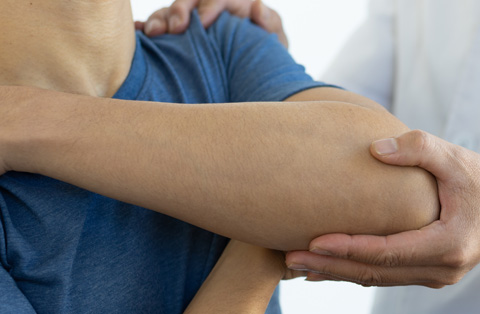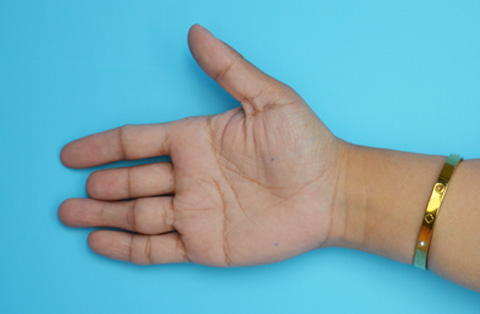What is Upper Extremity Reconstruction?
Upper extremity reconstruction is a surgical procedure that restores function, stability, and appearance to the hand, wrist, forearm, elbow, and shoulder. It is performed to repair injuries, correct deformities, or improve movement after trauma, disease, or congenital conditions.
These procedures may involve bone grafts, tendon transfers, nerve repairs, or soft tissue reconstruction. The goal is to enhance mobility, reduce pain, and improve the overall function of the affected limb.
Types of Upper Extremity Injuries
Upper extremity injuries affect the hand, wrist, forearm, elbow, and shoulder. They can result from trauma, overuse, or medical conditions. Common types include:
Traumatic Injuries
Fractures: Broken bones in the fingers, hand, wrist, forearm, or upper arm.
Dislocations: Joints forced out of position, often in the shoulder or fingers.
Tendon and Ligament Tears: Includes rotator cuff tears, biceps tendon injuries, and ligament sprains.
Nerve Injuries: Damage to the brachial plexus or peripheral nerves causing weakness or numbness.
Amputations: Partial or complete loss of a limb due to accidents or severe injuries.
Overuse Injuries
Carpal Tunnel Syndrome: Compression of the median nerve in the wrist.
Tennis Elbow (Lateral Epicondylitis): Overuse of forearm muscles causing elbow pain.
Repetitive Strain Injuries (RSI): Chronic pain due to repeated motions in the hand or arm.
Congenital and Degenerative Conditions
Arthritis: Joint inflammation leading to stiffness and pain.
Dupuytren’s Contracture: Thickening of the palm tissue, causing finger deformities.
Congenital Hand Differences: Birth defects affecting hand and finger development.
Each condition may require surgical or non-surgical treatment depending on severity.
Common Procedures in Upper Limb Surgery
Upper limb surgery includes various procedures to restore function, relieve pain, and improve mobility. Common procedures include:
Fracture Repair
Fixation of broken bones using plates, screws, or pins.
Tendon and Ligament Repair
Tendon Transfers: Moving a healthy tendon to replace a damaged one.
Rotator Cuff Repair: Fixing torn shoulder tendons.
Ligament Reconstruction: Restoring stability in the wrist, elbow, or shoulder.
Nerve Surgery
Carpal Tunnel Release: Relieving pressure on the median nerve.
Nerve Grafts and Transfers: Repairing damaged nerves for movement and sensation.
Joint Surgery
Arthroscopy: Minimally invasive surgery for joint problems.
Joint Replacement: Replacing damaged joints in the shoulder or elbow.
Fusion Surgery: Stabilizing painful joints by fusing bones together.
Soft Tissue and Reconstructive Surgery
Skin Grafts and Flaps: Covering wounds with healthy skin.
Microsurgery: Reattaching amputated fingers or repairing small blood vessels.
Treatment choice depends on the severity of injury or condition.
How Does Upper Extremity Surgery Help?
Upper extremity surgery restores function, reduces pain, and improves mobility in the hand, wrist, forearm, elbow, and shoulder. It helps patients regain strength and perform daily activities more easily.
Benefits for Hand and Upper Extremity Conditions
Restores Movement: Repairs damaged tendons, ligaments, and joints to improve flexibility.
Reduces Pain: Treats conditions like arthritis, nerve compression, and fractures.
Enhances Strength: Strengthens weak or injured muscles and tendons.
Corrects Deformities: Fixes congenital or trauma-related abnormalities.
Improves Quality of Life: Helps patients return to work, sports, and normal activities.
Surgical treatment is often recommended when non-surgical methods fail to provide relief.
Improving Joint Stability and Functionality
Improving joint stability and functionality is a key goal of upper extremity surgery. Joint stability allows smooth and controlled movement, while functionality ensures the hand, wrist, elbow, and shoulder perform daily tasks effectively.
How Surgery Improves Joint Stability and Functionality?
Ligament Reconstruction: Repairs torn ligaments to restore joint support and prevent dislocations.
Tendon Transfers: Replaces damaged tendons to improve muscle function and movement.
Joint Replacement: Replaces worn-out joints, reducing pain and restoring motion.
Arthroscopy: Removes damaged tissue or repairs structures using minimally invasive techniques.
Fusion Surgery: Stabilizes joints by permanently connecting bones in severe cases.
These procedures help patients regain strength, coordination, and mobility, improving their ability to perform everyday activities.
Recovery and Rehabilitation Post-Surgery
Recovery and rehabilitation after upper extremity surgery are essential for restoring movement, strength, and function. The process varies based on the procedure and individual healing ability.
Phases of Recovery
Immediate Post-Surgery (First Few Days)
Pain and swelling management with medications and ice therapy.
Immobilization with a cast, splint, or brace to protect healing tissues.
Early Rehabilitation (Weeks 1-6)
Gradual movement exercises to prevent stiffness.
Physical therapy to improve flexibility and strength.
Strengthening Phase (Weeks 6-12)
Increased resistance exercises for muscle rebuilding.
Continued therapy to restore full range of motion.
Long-Term Recovery (Months 3-12)
Functional training for daily activities and work tasks.
Full return to sports or heavy activities may take several months.
Following the surgeon’s and therapist’s instructions ensures the best outcome and minimizes complications.
Who Needs Upper Extremity Surgery?
Upper extremity surgery is recommended for individuals with injuries, degenerative conditions, or congenital abnormalities affecting the hand, wrist, forearm, elbow, or shoulder. It is considered when non-surgical treatments fail to provide relief.
Candidates for Upper Extremity Surgery
Trauma Patients: Those with fractures, dislocations, tendon or nerve injuries.
Arthritis Patients: Individuals with severe joint pain, stiffness, or deformity.
Nerve Compression Cases: Patients with carpal tunnel syndrome or brachial plexus injuries.
Congenital Conditions: People with birth defects affecting limb function.
Overuse Injury Patients: Those with chronic conditions like tennis elbow or rotator cuff tears.
Surgery helps restore function, relieve pain, and improve quality of life for these individuals.
Common Conditions Leading to Surgery
Several conditions can lead to upper extremity surgery when they cause pain, weakness, or limited movement. These conditions may result from injury, disease, or congenital factors.
Common Conditions Requiring Surgery
Traumatic Injuries
Fractures (hand, wrist, forearm, elbow, shoulder)
Dislocations (fingers, shoulder, elbow)
Tendon and ligament tears (rotator cuff, biceps tendon)
Nerve injuries (brachial plexus damage, peripheral nerve trauma)
Degenerative Conditions
Osteoarthritis (joint deterioration causing pain and stiffness)
Rheumatoid arthritis (autoimmune joint inflammation)
Nerve Compression Disorders
Carpal tunnel syndrome (median nerve compression in the wrist)
Cubital tunnel syndrome (ulnar nerve compression at the elbow)
Overuse and Repetitive Strain Injuries
Tennis elbow (lateral epicondylitis)
Golfer’s elbow (medial epicondylitis)
Congenital and Developmental Conditions
Dupuytren’s contracture (thickened hand tissue causing finger bending)
Birth defects affecting hand or limb function
Surgical treatment depends on the severity of the condition and the patient’s overall health.
How to Choose the Right Specialist for Upper Extremity Reconstruction?
Choosing the right specialist for upper extremity reconstruction is crucial for achieving the best results. A skilled surgeon ensures proper diagnosis, treatment, and recovery.
Factors to Consider When Choosing a Specialist
Board Certification and Training
Look for an orthopedic surgeon or plastic surgeon with specialized training in hand and upper extremity surgery.
Verify board certification in orthopedic or plastic surgery.
Experience and Expertise
Choose a surgeon with extensive experience in reconstructive and microsurgical procedures.
Ask about their success rates and previous cases.
Hospital Affiliation
Prefer specialists working at reputable hospitals or surgical centers with advanced technology.
Patient Reviews and Testimonials
Read reviews from previous patients to assess their satisfaction and surgical outcomes.
Communication and Personalized Care
A good specialist listens to concerns, explains treatment options, and provides a clear recovery plan.
Consulting with multiple specialists can help in making an informed decision.
What Are the Risks and Complications of Upper Extremity Surgery?
Upper extremity surgery is generally safe, but like any procedure, it carries some risks. The likelihood of complications depends on the type of surgery, the patient’s overall health, and the complexity of the condition.
Possible Risks and Complications
Infection: Redness, swelling, or discharge at the surgical site.
Bleeding or Hematoma: Excessive bleeding or blood collection under the skin.
Nerve Damage: Numbness, tingling, or weakness in the affected limb.
Stiffness or Limited Mobility: Scar tissue formation restricting movement.
Delayed Healing: Slow bone or tissue healing, especially in smokers or diabetics.
Blood Clots (Deep Vein Thrombosis): Rare but serious risk in longer surgeries.
Graft or Implant Failure: Rejection or failure of reconstructed tissues or implants.
Following post-surgery care instructions reduces the risk of complications and ensures better recovery.





